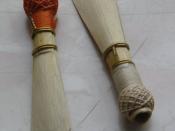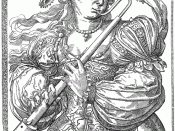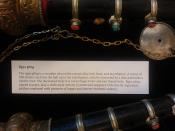The Middle Ages and Renaissance Periods were a time of much development both musically and instrumentally. Instrumental playing became steadily more popular and more commonly performed. Among the first instruments being played were double reeds, or shawms, along with other various instruments such as the flute, aulos, harp, and lute. These first double reed instruments became the basis and influenced many of the modern day instruments such as the oboe and bassoon. They are also thought by some to be the forerunners of the modern day clarinet as well. The history of these double reeds have changed greatly throughout the Middle Ages and Renaissance Periods and have come a long way since the shawm, the predecessor of modern day double reeds.
The shawm was a very prevalent instrument during the early and late Middle Ages. "The oldest known record of it comes from twelfth century Saracen Sicily" (Geiringer 60).
It was thought to have come to the West from Italy. The instrument consisted of a narrow wooden bore that was slightly conical. There were seven finger holes with the seventh being reached by a mechanism. The double reed was inserted completely into the mouth. Because of that the performer was unable to use his lips to control tone color or intonation. "A remarkable thing about this shawm is that the lowest hole, operated by the little finger, is duplicated, appearing both on the right and left of the instrument, as some performers held the instrument with the left hand below the right and some with the right hand below the left, the unused hole being stopped with wax" (Geiringer 74). During the late middle ages different sizes and pitched shawms were introduced, such as a smaller soprano version called the shawm proper and a larger version called the pommer...



Great Job
Very well organized.
4 out of 4 people found this comment useful.